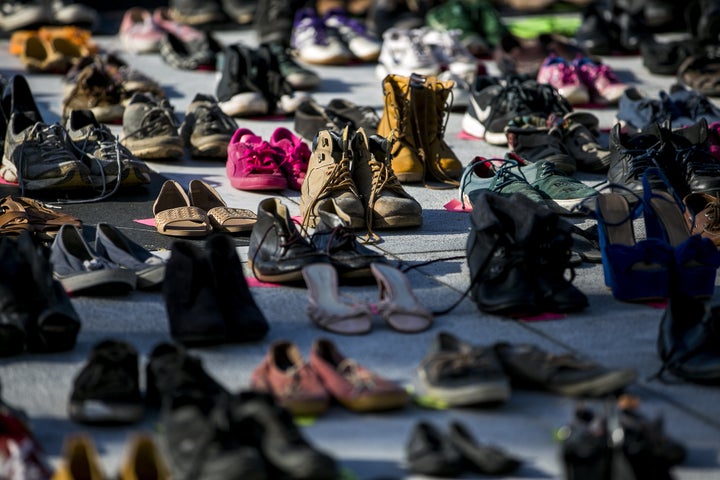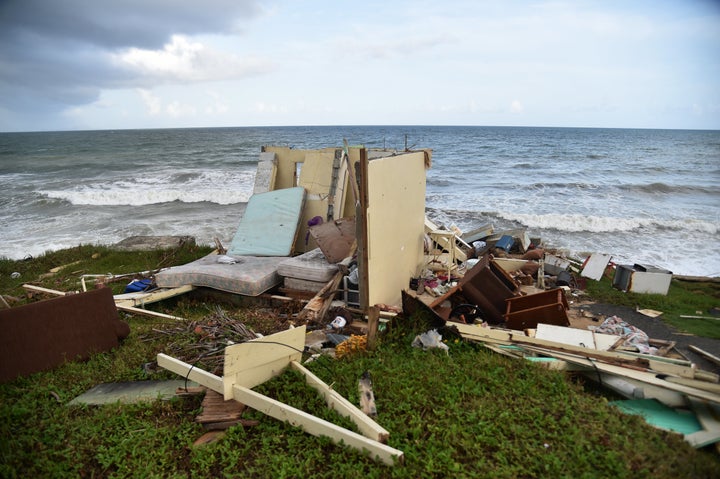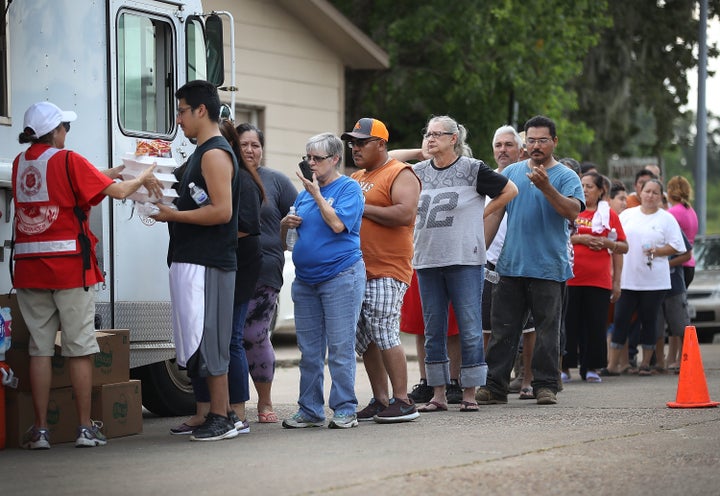
Why are we not looking to experience to convince ourselves as a people and as a nation to respond to the risks of climate change before it is too late? Perhaps it is because scientists always make us look into an uncertain future, with climate change being calibrated in decades to come. Even the recent dire forecasts of rapidly approaching risk and vulnerability place the problem in the future, not the present.
Climate change is here now, and people are already dying as a result. Yes, it will continue to get worse, but the damage already being done is deserving of a radical response.
So that we can better communicate the urgency of action, we take a first step in looking back over past decades to assess the contribution of observed climate change to damage that the United States has experienced. That contribution is considerable.
“Climate change is here now, and people are already dying as a result.”
The second volume of the Fourth U.S. National Climate Assessment (NCA4) was released on Black Friday, Nov. 23, 2018. It complements the first installment, the Climate Science Special Report, which was released last year. While last year’s report focused on the science of climate change — the human-induced natural and physical changes observed and projected across the 50 states in a warming planet ― this year’s installment translates what those changes mean for the lives of Americans. In other words, how are things that we care about at risk from climate change?
These authoritative assessments answer many questions, but they also raise many others, including “Who cares about more of the same?” and, perhaps more important, “What did our not listening to earlier warnings cost us, my family, my grandchildren, my country and my planet?”
The first question is logical. Policymakers emphatically claim that nothing is new in the new reports. They are wrong, but they have a point; the new contributions are in the nuances, but they strengthen understanding of growing intensity and frequency.
The major conclusions of the new installment continue to highlight an increased ability of science and social science to attribute observed effects to climate change driven by human activity — most notably, the combustion of fossil fuel in heating demand, cooling demand, transportation and industrial production. They provide a domestic context in which we can build a more complete understanding of the potential effects of warming to 1.5 and 2.0 degrees Celsius above the preindustrial average that were reported so clearly in the other major climate report recently in the news, the Special Report on 1.5 Degrees by the Intergovernmental Panel on Climate Change. The NCA4 goes beyond those temperature thresholds along high and low emissions scenarios to see what might happen. But what is new?
In 2014 the IPCC told us that our ability to attribute observed and projected climate change to human activity across the U.S. and the rest of the globe had progressed to the point that we could look to specific past extreme weather events and explore the contribution of human activity to their intensity and pattern. This ability is called forensic attribution, and it is, if anything, overly conservative.
To exploit this new opportunity, we’ve looked at data from hurricanes that have made landfall in the United States over the past three decades. We are not claiming that the hurricanes were caused by climate change. Instead, we are reflecting on historical data to ask how much economic damage and how many fatalities would have been avoided if the hurricanes had behaved more like their predecessors.

As one of us has shown in recent work, human-caused climate change appears to be favoring amplified persistent weather extremes associated with a wavier, slower jet stream. As a result, hurricanes like Harvey and Florence essentially parked and dropped massive amounts of rain after making landfall because the steering currents determined by the jet stream were not there. Hurricanes like Maria and Michael were stronger because ocean and Gulf waters set records for temperature. The amplified wildfire seasons in the West were the result of stationary conditions that limited rainfall to historical lows for very long periods.
The most striking data comes from 2017’s Hurricane Maria in Puerto Rico, where more than 3,000 people died and economic damage amounted to more than $91 billion. Puerto Rico has seen many hurricanes, including 1998’s Georges and 1989’s Hugo. Yet previous hurricanes from the last 20 years had fewer than 10 deaths and economic damage of no more than $3 billion, on average. These dramatic differences can be attributed in large part to historically hot waters in the Atlantic that are the direct result of a warming planet, making a large share of Maria deaths avoidable.
When we shift our focus to Houston and the eastern part of North Carolina, we see locales that recently experienced extreme rain events from hurricanes Harvey and Florence. Their unprecedented patterns can now be attributed to a shift in the jet stream and the historically hot waters in the Gulf of Mexico and the Atlantic (caused by a warming planet).

In Houston, 2017’s Harvey is estimated to have caused more than $125 billion in damage and killed 117 people, whereas hurricane damage in the area averaged $4 billion annually from 2002 to 2008 and only $500 million from 2009 to 2016, and annual deaths averaged seven and four, respectively, over those periods. Economic damage and deaths from Harvey were more than 20 times higher than recent historical averages.
Along the Carolina coast, 2018’s Florence caused $38 billion to $50 billion in damage and killed 39 people. Hurricane Matthew in 2016 caused $1.5 billion in damage and 28 deaths, while the 2003 to 2015 averages for the area were $1.1 billion in damage and four deaths per year.
Also this year, Hurricane Michael caused economic damage more than 1,000 times the historical average for the region and multiplied deaths by nearly 1,000 percent when it struck the Florida Panhandle in early October. Michael ranked first in recorded history in intensity for a hurricane making landfall from the Gulf — a fact that can also be attributed to record high temperatures in the Gulf of Mexico that were, in turn, caused by a warming planet.
“Hurricanes like Maria and Michael were stronger because ocean and Gulf waters set historical records for temperature.”
The Florida Peninsula experience, however, has been slightly different. Florida enacted adaptation plans and more rigorous building codes after the devastation of Hurricane Andrew in 1992. That storm had twice the economic cost of Irma in 2017, so the adaptation worked. The human toll from Andrew was, though, lower than Irma’s (29 and 84 deaths, respectively), perhaps because people felt a false sense of security from the adaptation and did not evacuate when they were told to — certainly an unintended consequence.
Opposition to the Vietnam War exploded with the release of the Pentagon Papers in 1971. Their release convinced the American people that thousands of Americans were losing their lives in a lost cause, and they were appalled. A president was toppled. Another was impeached. Recognition that inaction was costing lives and expending huge amounts of federal money turned out, looking back, to support a fundamental change in policy.
What does that history bring to the table for the climate debate? Two fundamental questions. Why should we have waited for decades and for loss of life to climb by a factor of at least 10 to act? And why should we wait for the economic cost to climb without constraint?
Now we have a president who asserted on national television that he knows the climate scientists’ reports are wrong, based on his “gut” and that “something is changing and it will change back.” Nothing could be further from the truth. The climate does not just change back. Because of our historical emissions, many changes are locked in — and others that have occurred are permanent. If the climate were to change back, we would be talking about a time frame of tens of thousands of years. This is a time scale that is, for human society, completely irrelevant. And we already face observed risks that will only increase in intensity, frequency, duration and extent in the near term, no matter what we do. Why? Because the carbon dioxide that we have pumped into the climate system has already committed us to twice the warming that has already occurred.

Some will persist in opposing action by saying, “We have heard this song before.” Yes, you have, but not as loudly. And not as convincingly. And really, that is the point. The warnings found in the assessments released in 2018 have been issued over the past two or three decades, to no avail. We have wasted decades of valuable time. The costs of inaction are now an order of magnitude higher than they were. It is now more imperative and more expensive to do something than it would have been in, say, 1990. And it will be much more expensive to begin in 2030 or 2040 or 2050.
The existential threat from climate change has evolved into this: At some point, saving our way of life will become impossible because it will become unaffordable. We shut down a war because we found out that people were dying for no good reason. Let’s begin to shut down carbon emissions because people are dying unnecessarily.
Dr. Michael E. Mann is the distinguished professor of atmospheric science at Penn State and the director of the Penn State Earth System Science Center. Gary W. Yohe is the Huffington Foundation professor of economics and environmental studies at Wesleyan University.